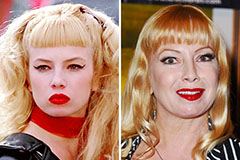
Portray landscapes is a great way to enjoy artwork and nature concurrently. No matter if you are new to portray or choosing up a brush after yrs, Understanding how to paint landscapes might be each fun and stress-free. You don’t need to be a professional to get started—just some practice, persistence, and the correct ways.
Choose the Suitable Supplies
Getting going with landscape painting won't call for expensive resources, but deciding on the correct resources will make your expertise less of a challenge and a lot more pleasing. Should you’re a rookie, keep items uncomplicated and focus on excellent around quantity.
Paints: Acrylic and watercolor are the two good solutions for beginners. Acrylic paints dry swiftly, are simple to operate, and don’t require Particular cleaners—just drinking water. They’re also forgiving when you make a error. Watercolors are more fragile and provide a comfortable, fluid look that’s perfect for gentle landscapes, Nevertheless they acquire extra control. Pick whichever feels far more pure to you personally.
Brushes: You don’t have to have a significant established. Get started with 3–5 brushes of different sizes and shapes. A substantial flat brush is beneficial for skies and backgrounds. A round brush aids with trees and information. A lesser element brush will help with ending touches. Artificial brushes are affordable and function well with each acrylic and watercolor.
Paper or Canvas: For acrylics, stretched canvas or canvas paper will work perfectly. For watercolors, pick out thick watercolor paper (at least 300gsm). Thin paper can buckle when wet, so go for some thing durable. Pads are wonderful for exercise, and sheets might be taped down for painting.
Other Supplies: You’ll also need a palette (a plastic or picket area for mixing paint), a cup or jar for water, and paper towels or perhaps a rag for cleansing brushes. A pencil and eraser are practical for sketching your scene prior to deciding to paint.
Don’t forget about to safeguard your workspace—use newspaper or an old fabric. If you’re portray exterior, deliver a portable package in addition to a board or easel.
Begin with what you've got or can manage. As you improve, you’ll decide which instruments match your style. But with just a couple excellent resources, you’re willing to commence painting your initial landscape.
Decide on a straightforward Scene
When you are just getting started with landscape portray, it’s ideal to begin with a thing straightforward. Deciding on the suitable scene could make the procedure fewer frustrating and enable you to learn the basic principles with no getting disappointed. A simple scene lets you center on color, form, and composition without currently being distracted by a lot of specifics.
Get started by finding a landscape with a clear construction. For example, a discipline with a tree, a Seaside at sunset, or a little hill less than a blue sky. Prevent busy scenes like dense forests or cityscapes packed with properties. These have a lot of components and might be tricky to manage should you’re still Understanding.
Utilizing a Image reference is a good idea. You might take a photograph yourself or locate one on the internet. Seek out visuals with strong light and dark places, obvious horizons, and essential shapes. This will help you know how to interrupt the scene into pieces—sky, land, trees, h2o, etc.
Give attention to 3 items: a foreground, Center floor, and history. This helps produce depth inside your painting. A simple lake scene, as an example, might need grass or rocks in entrance, the lake in the center, and hills or sky in the back.
Don’t be worried about copying the Photograph specifically. Utilize it for direction, but Be happy to vary hues or go away out aspects. What issues most is practising how to rearrange Room and use colour proficiently.
As you obtain far more relaxed, it is possible to try out a lot more complicated scenes. But for now, begin small and Construct your self-confidence. Painting a straightforward scene very well teaches you a lot more than having difficulties via a complicated just one. And you’ll possible delight in the method a lot more, that is equally as critical as the result.
Sketch The essential Styles
Before you start painting, it can help to frivolously sketch The essential designs of one's scene. This move offers framework in your do the job and can help you intend where by anything will go. You don’t have to be terrific at drawing—just target inserting the primary things.
Begin with the horizon line. This is when the sky fulfills the land or h2o. It sets the viewpoint and separates the history from the rest of the scene. Attract it flippantly with a pencil throughout your paper or canvas.
Next, block in the key styles. As an example, if you’re painting a hill, attract a comfortable curve. If there’s a tree, sketch an oval for the leaves plus a rectangle with the trunk. Preserve it very simple—Believe with regard to circles, rectangles, and triangles. You're not drawing every single leaf or wave, just demonstrating wherever issues are.
Concentrate to scale and placement. Objects that are closer really should appear more substantial, though distant types should be more compact. This helps generate depth and will make your painting seem extra reasonable.
In case you’re employing a Picture, Look at areas from the graphic. Exactly where would be the tree in relation into the hill? How higher may be the Sunshine inside the sky? Use these clues to put your styles precisely.
Don’t stress about great strains. You’ll paint over the sketch later. This can be merely a guide to assist you truly feel self-confident ahead of incorporating shade. Some artists even skip sketching after they achieve practical experience, but any time you’re Studying, it’s a useful stage.
Take a minute to step again and evaluate your sketch. Make sure it feels balanced. Alter anything that appears off. As you're proud of the layout, you might be wanting to start out painting above it along with your foundation colours.
Block in the primary Colors
Once your sketch is finished, the subsequent stage is to block in the key colours. This means filling substantial parts of your portray with standard shades. You’re not including particulars yet—just laying down the muse. Visualize it like portray the track record of a house right before incorporating the windows and doorways.
Begin with the most important portions of your scene. Should you’re painting a sky, deal with that place very first. Use a significant brush to paint in easy strokes. Then move ahead on the land, water, or trees. Use flat, even shades to fill Every space. Don’t fret if it seems flat or simple today—this stage is focused on building framework.
Choose shades that match the final truly feel of your scene. If the sky is at sunset, you could use oranges, pinks, and purples. For your midday scene, delicate blues and whites are superior. The objective is to acquire a perception of the overall mood.
Get the job done in the history towards the foreground. Which means portray the sky and far-away hills ahead of introducing closer trees or objects. This causes it to be simpler to layer paint and avoid smudging.
For anyone who is using acrylics, you’ll want to operate quickly given that they dry rapid. For watercolors, Enable Every area dry in advance of portray beside it so the colours don’t combine far too much unless you would like them to.
At this stage, your painting will however glimpse tough. That’s all right. Think of it like setting the phase for what will come future. You’re giving your self a base to construct on.
After the major shades are blocked in and dry, you may proceed to introducing shadows, light, texture, and all of the tiny information that carry the scene to daily life. But 1st, center on obtaining the standard shades in the best area.
Increase Depth with Levels
As you’ve blocked in the most crucial shades, it’s time to develop depth. Depth can make your painting really feel much more real, like you could move into it. You are able to create this by introducing levels of colour, texture, light, and shadow.
Start by Doing the job with the qualifications towards the foreground. Add A further layer to the sky if desired—probably lighter near the horizon, darker at the top. For hills or mountains, layer unique shades to indicate distance. Things which are distant should be lighter and fewer in depth. This trick is known as “atmospheric viewpoint” and it can help generate space in the painting.
Next, check out places where gentle and shadow drop. Use darker shades so as to add shadow beneath trees or along the facet of hills. Use lighter shades where daylight hits. Don’t use black—attempt darker variations of the colors by now inside your portray. This keeps points searching natural.
Use scaled-down brushes now. Add texture to trees with speedy, brief strokes. For grass, test dabbing or using a dry brush. For drinking water, you can frivolously sweep with horizontal strokes to point out reflections.
Let Just about every layer dry prior to incorporating the following when you’re utilizing acrylics. For watercolors, watch out not to use a lot of h2o or else you’ll raise the layer beneath.
Choose your time and effort and action again typically. Evaluate where you want additional contrast or smoother transitions. Layering isn’t just about including additional paint—it’s about increase your scene bit by bit, like shaping clay.
By including levels diligently, you’ll make your landscape search further plus more alive. It will take persistence, but it surely’s worthwhile. Levels help inform the story of the scene—with the considerably sky into the leaves near to you.
Target Gentle and Shadows
Light-weight and shadows are what give your portray everyday living. They assist show time of day, mood, and shape. With out them, a landscape can appear flat. Being attentive to how mild hits your scene can make all the things feel more real.
Start by choosing a light resource. For most landscapes, the Solar is the most crucial light-weight. Come to a decision wherever it can be—significant above, low over the horizon, into the remaining or appropriate. This lets you know in which shadows will fall. If the sun is over the remaining, shadows will drop to the proper, and vice versa.
Use lighter shades to show locations which are hit by mild. These spots should jump out a little bit. Don’t just use white—consider making use of warm, soft tones that match your coloration plan. As an example, a sunlit tree may have brilliant yellow-green leaves.
For shadows, use darker variations of the base colors. A environmentally friendly discipline might have dim inexperienced or blue within the shaded parts. Prevent employing plain black—it could make your portray search uninteresting or severe. Shadows nonetheless have coloration, just considerably less light.
Listen to comfortable and difficult edges. A shadow less than a tree could possibly be sharp, but a shadow on the hill is likely to be smooth and blurry. Blend where necessary to keep factors organic.
Also, try to look for reflected light-weight. Often, light bounces off a floor and brightens up the shadow a little. That is very true in drinking water or on light-weight-coloured floor.
Use mild and shadow to develop contrast. This will help guide the viewer’s eye to important areas of your portray, like a tree or even a route. A bright patch in opposition to a dim history will stand out more.
Paying time on this action makes a big variation. Even a straightforward scene can really feel prosperous and sensible when light-weight and shadow are utilized properly.
Retain Practicing
Recovering at painting landscapes normally takes time. No-one will become terrific overnight. Each artist—Regardless how qualified—begun by making errors and Understanding from them. So An important suggestion is easy: hold practising.
Don’t stress In the event your first handful of paintings don’t seem like you imagined. That’s standard. Every single portray teaches you anything. Possibly you find out how to blend skies far better, how to produce trees search significantly less flat, or how to fix muddy colors. These small classes add up.
Check out portray the same scene more than at the time. The main Variation could possibly be rough, but the second or 3rd will exhibit enhancement. You’ll recognize things you didn’t see before—how The sunshine performs, in which the shadows fall, or ways to use improved shades.
Experiment with applications way too. Make use of a sponge, palette knife, or even your fingers. Distinctive instruments can develop new effects and make it easier to uncover your fashion. Check out video clips, examine other artists’ work, and acquire notes. There’s often something new to test.
And keep in mind, it’s all right to choose breaks. From time to time stepping away can help you see your do the job with clean eyes. But always click here return.
The greater you paint, the more self-assured you’ll get. Your fingers will learn the motions, along with your eyes will learn to see designs, light-weight, and colour extra Obviously. Continue to keep heading.
Final Feelings
Learning to paint landscapes normally takes time, patience, and follow. But it really’s a skill everyone can Develop. You don’t need to have expensive equipment or decades of training to start out. Anything you do require is often a willingness to try, mess up, and try yet again.
Each and every action—choosing your components, sketching, blocking in shade, introducing depth, focusing on mild and shadows—teaches you anything new. With each individual painting, you receive somewhat improved. Some times will really feel aggravating. Other times, points will simply click. That’s part of the process.
Painting landscapes also aids you slow down and look at the globe in different ways. You start noticing how the Sunlight lights a discipline or how trees transform condition with length. It will make you more observant and present.
Don’t worry about perfection. The objective isn’t to copy nature specifically—it’s to capture how it feels. Perhaps it’s a quiet morning by a lake, or the warmth of the late afternoon in the hills. Should your painting helps make a person feel that, you’ve carried out some thing correct.
So consider your time, appreciate the process, and keep likely. Each individual landscape you paint provides to the progress. And with time, you’ll see just how much you’ve come. Keep portray, and Permit character inspire you.
 Kel Mitchell Then & Now!
Kel Mitchell Then & Now! Tia Carrere Then & Now!
Tia Carrere Then & Now! Josh Saviano Then & Now!
Josh Saviano Then & Now! Traci Lords Then & Now!
Traci Lords Then & Now! Batista Then & Now!
Batista Then & Now!